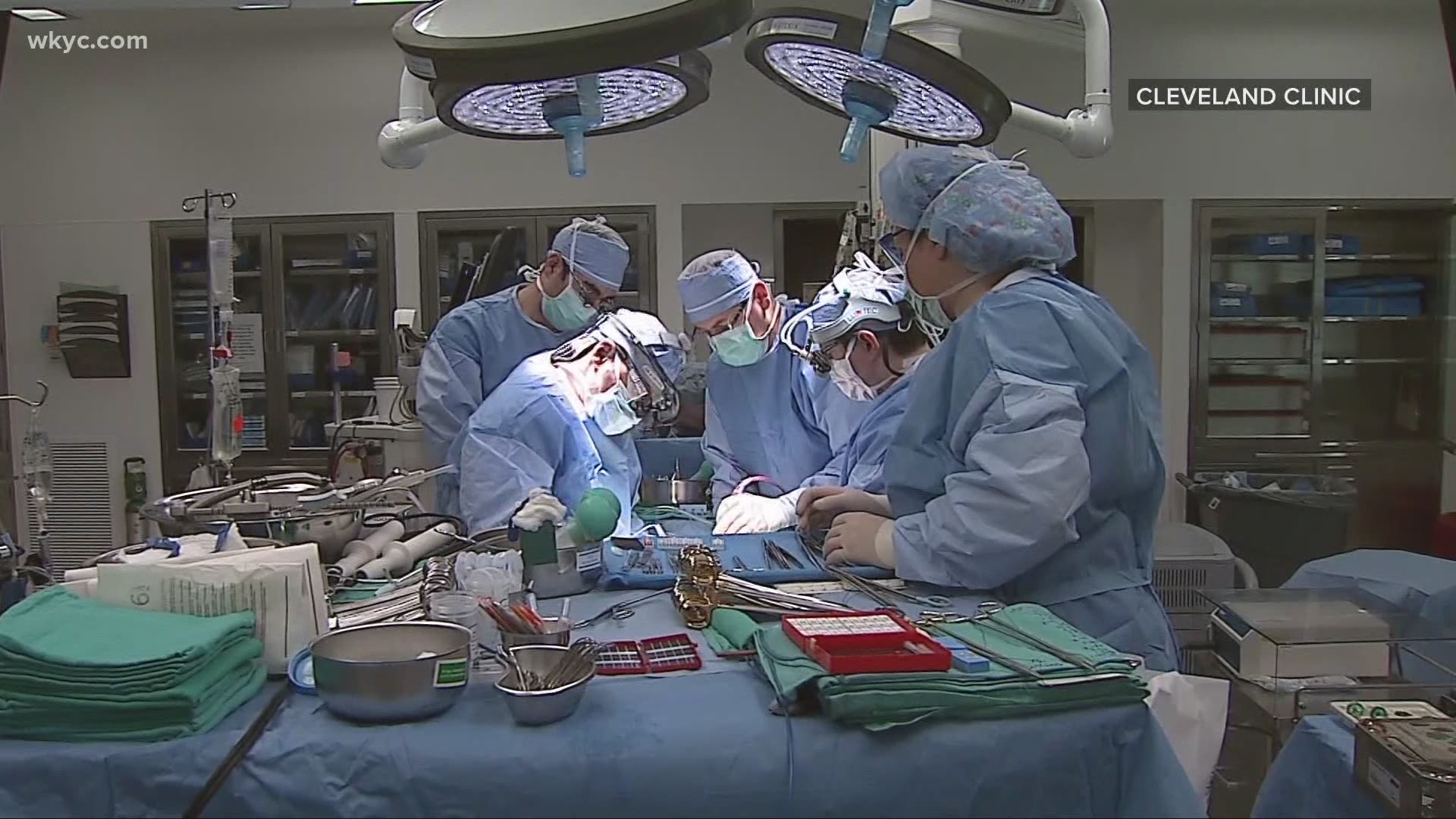CLEVELAND — EDITOR'S NOTE: The video in the player above is from a previous, unrelated story.
University Hospitals announced it is using a new General Electric Healthcare Imaging System into daily practice.
The Critical Care Suite 2.01 is the world's first on-device artificial intelligence program that helps medical professionals assess endotracheal tube placement. It is important for doctors and nurses to be able to quickly and accurately place a ventilator in patients who need it, including those suffering from COVID-19. During the pandemic, up to 15% of COVID-19 patients require intubation.
As many as one in four intubations nationwide results in a tube not being placed properly. If that goes unrecognized, those mispositions can lead to complications including collapsed lungs, hyperinflated lungs and even cardiac arrest.
UH radiologists read dozens of images a day from patients who may have a mispositioned tube, and those readings can take several hours each.
But the new technology that UH is putting in place can help address those problems. The software acts as artificial intelligence that can help guide the placement of ET tubes. It can also detect if a patient has a collapsed lung or other complication, and flags the image for immediate reading. This helps set the patient on a rapid path to treatment and recovery. The unit is also mobile, meaning it can travel directly to patients.
“In several COVID-19 patient cases, the pneumothorax AI algorithm has proved prophetic. It has accurately identified collapsed lungs in intubated COVID-19 patients, flagging the image to radiologists and radiology residents, and enabling expedited patient treatment,” said Amit Gupta, MD, Modality Director, Diagnostic Radiography at University Hospitals. “Altogether, this technology is a game changer, helping us operate more efficiently as a practice, without compromising diagnostic precision.”
UH started testing the Critical Care Suite 2.0 back in February, and began using it officially in March. It is the first hospital in the world to integrate the technology into daily critical practice.
“UH’s evaluation and implementation of Critical Care Suite 2.0 represents a close working relationship between GEHC and University Hospitals that spans two decades,” said Robert “Chip” Gilkeson, MD, Director, Cardiovascular Imaging Center and Vice Chairman of Research at University Hospitals. “Employing this equipment means better care for our patients.”
“Our goal at UH is to provide the most advanced, high-quality care and as such we continuously look to improve upon our processes to help us deliver on this objective,” said Peter J. Pronovost, MD, PhD, Chief Quality & Clinical Transformation Officer at University Hospitals. “Mispositioned ET tubes could cause harm and this AI solution is enhancing the care of our critically ill patients, creating a potentially safer, more effective treatment pathway.”
Since its introduction, Critical Care Suite 2.0 has helped assess about 150 patients per week at UH Cleveland Medical Center.
EDITOR'S NOTE: The video in the player below is from a previous, unrelated story.

